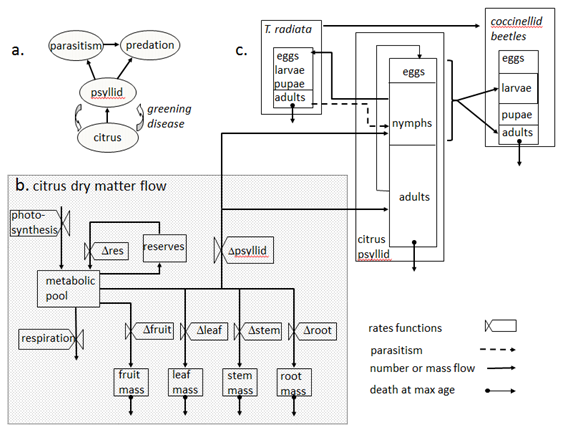Asian citrus psyllid and citrus greening disease
The invasive Asian citrus psyllid Diaphorina citri Kuwayama vectors the bacterial pathogen ‘Candidatus Liberibacter asiaticus’ that is the putative causal agent of citrus greening disease (Huanglongbing disease) in citrus in many areas of the world. The capacity to predict the potential geographic distribution, phenology and relative abundance of the pest and disease is pivotal to developing sound policy for their management. A weather-driven physiologically based demographic model (PBDM) system is developed that summarizes the available data in the literature, and used to assess prospectively the geographic distribution and relative abundance of citrus, the psyllid, its parasitoid (Tamarixia radiata Waterston), and citrus greening disease in North America and the Mediterranean Basin. The potential for natural and biological control of citrus psyllid is examined prospectively.
Gutierrez A.P., Ponti L., 2013. Prospective analysis of the geographic distribution and relative abundance of Asian citrus psyllid (Hemiptera: Liviidae) and citrus greening disease in North America and the Mediterranean Basin. Florida Entomologist, 96:1375-1391. http://dx.doi.org/10.1653/024.096.0417 | Open access
Gutierrez A.P., Ponti L., 2013. Prospective analysis of the geographic distribution and relative abundance of Asian citrus psyllid (Hemiptera: Liviidae) and citrus greening disease in North America and the Mediterranean Basin. Florida Entomologist, 96:1375-1391. http://dx.doi.org/10.1653/024.096.0417 | Open access



Comments
Post a Comment